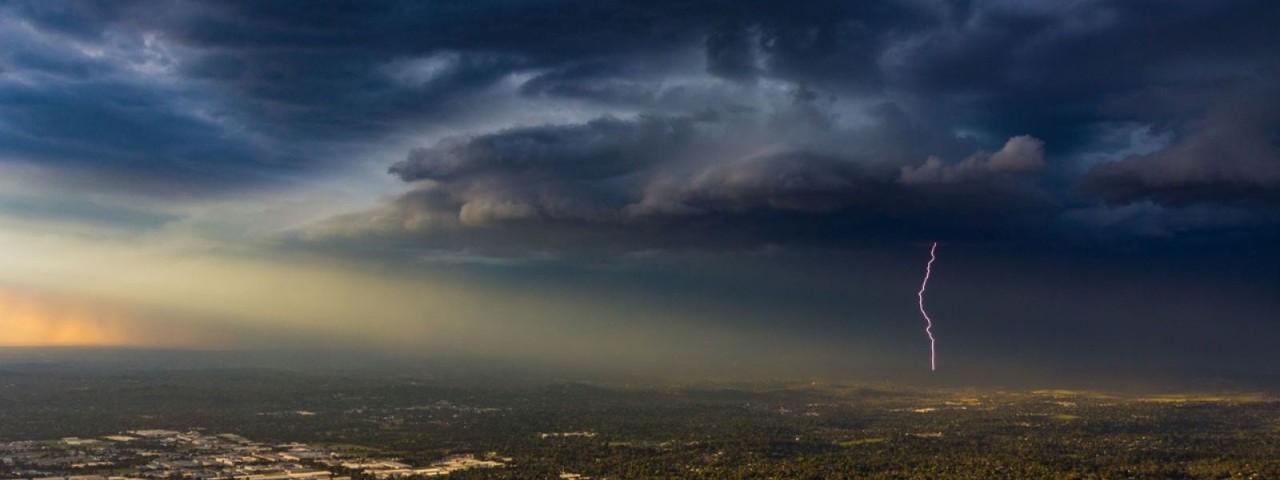By staying informed, having a bushfire survival plan, packing an emergency kit, and taking necessary precautions, you can help reduce the risk associated with bushfires.
How do storms get their names?

In Australia, ‘storm season’ falls between November and April - a time when the country can expect some severe weather and tropical cyclones.
According to the Commonwealth Scientific and Industrial Research Organisation (CSIRO), Australia’s mainland usually experiences four to five cyclones every year, and each has its own dedicated name. But where do these names come from?
Though you would be forgiven for assuming the name was simply drawn out of a hat, the names are methodically chosen from a system steeped in history.
Why do storms even need names?
Names are chosen in order to easily identify storms to the public and to prevent confusion when two storms occur at the same time. Though it’s not typical to see two storms at once, that doesn’t mean it doesn’t happen.
An example of this was when Cyclones Trevor and Veronica loomed over northern Australia in 2019. Without these names, there would have been a lot of confusion when these storms were being described in forecasts, watches, and warnings.
The name game
While Queensland can also lay claim to having invented the multifocal contact lens, the inflatable aircraft escape slide and the mighty pineapple peeler, one Queenslander can also boast the invention of the storm naming system that is used worldwide today.
In the mid-1890s, Queensland meteorologist Clement Wragge began naming tropical cyclones in alphabetical order, using the Greek alphabet, mythological characters, and finally, politicians who annoyed him.
Said to be quite a mischievous character, Wragge’s naming system allowed him to publicly announce that certain officials were causing ‘great distress’ or ‘wandering aimlessly around the pacific’.
When Wragge retired in 1908, the alphabetical naming system fell into disuse and another system wasn’t properly introduced until 1964. It was then that the Bureau of Meteorology began using female names for storms, starting with Cyclone Bessie. Other countries quickly adopted this system and the practice became used worldwide.
But why would volatile storms only be named after women? In 1975, which was ‘International Women’s Year’, Australian science minister Bill Morrison objected that only women were named. Morrison recognised that devastating storms should be named after both sexes and was the first person in the world to add male names to the list.

Those looking at artificial grass may like it for its aesthetics and low maintenance, although others may prefer the natural environment that real grass brings. Image: Getty
International travel
The Bureau of Meterology is responsible for naming storms in Australia and maintains a list of names that are worked through alphabetically. If a storm forms in a neighbouring country, say, Fiji or Indonesia, the name will be chosen by that adjacent region and continued to be used in Australia. Cyclone Oma in 2019, is just one example of a cyclone that began in Fiji before hitting Australia.
One and done
Names from the list are recycled, but when a storm hits the mainland, that name is usually retired. So don’t expect to see another cyclone named Tracy (1974) or Marcia (2015) again. You’re also not likely to see a Cyclone Donald or a Cyclone Barack anytime soon, as well-known celebrity or controversial names are also avoided.
As Australia’s (hopefully quiet) tropical cyclone season ramps up, you may be interested to find that the Bureau of Meteorology takes requests for names, but be prepared to wait as the number of requests far outnumber the number of tropical cyclones. So, it could be a few decades until you hear your name wreaking havoc.
The information provided is general advice only. Before making any decisions please consider your own circumstances and the Product Disclosure Statement and Target Market Determinations. For copies, visit racv.com.au. As distributor, RACV Insurance Services Pty Ltd AFS Licence No. 230039 receives commission for each policy sold or renewed. Product(s) issued by Insurance Manufacturers of Australia ABN 93 004 208 084 AFS Licence No. 227678.


